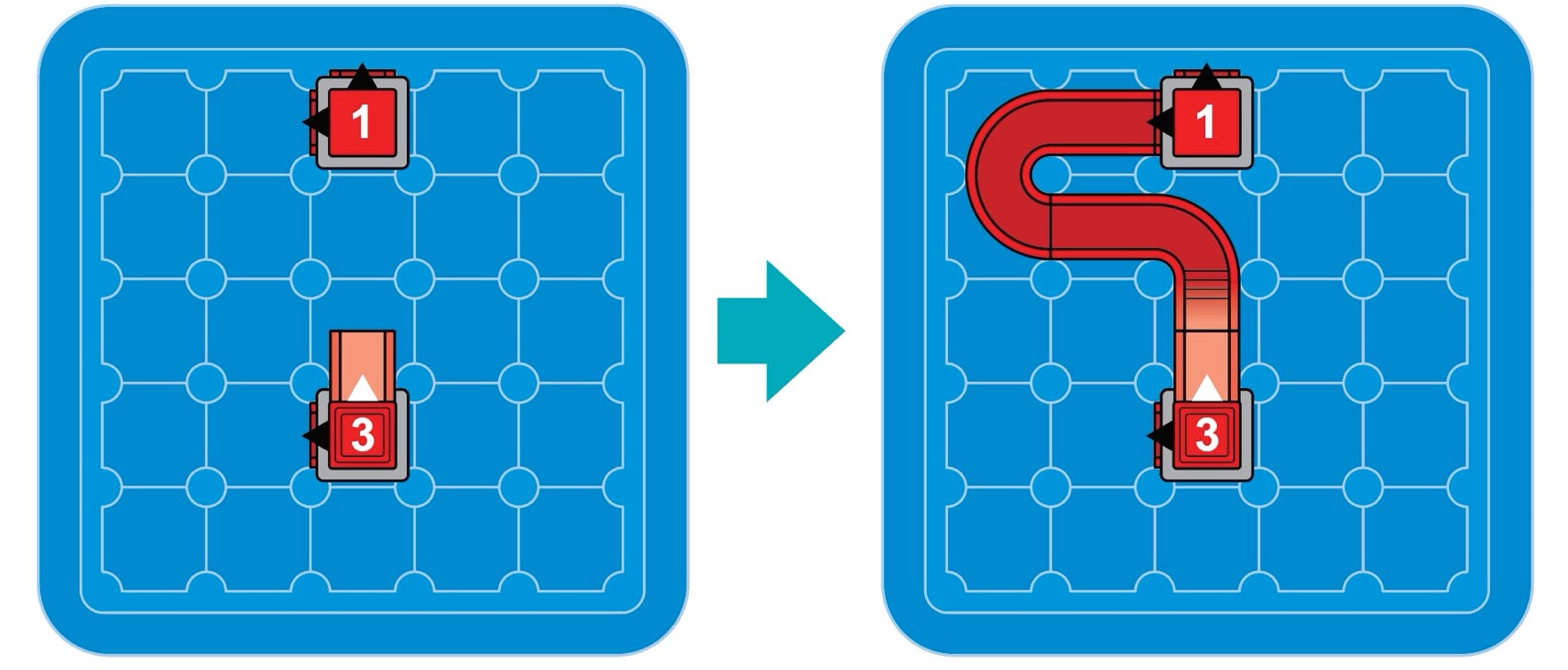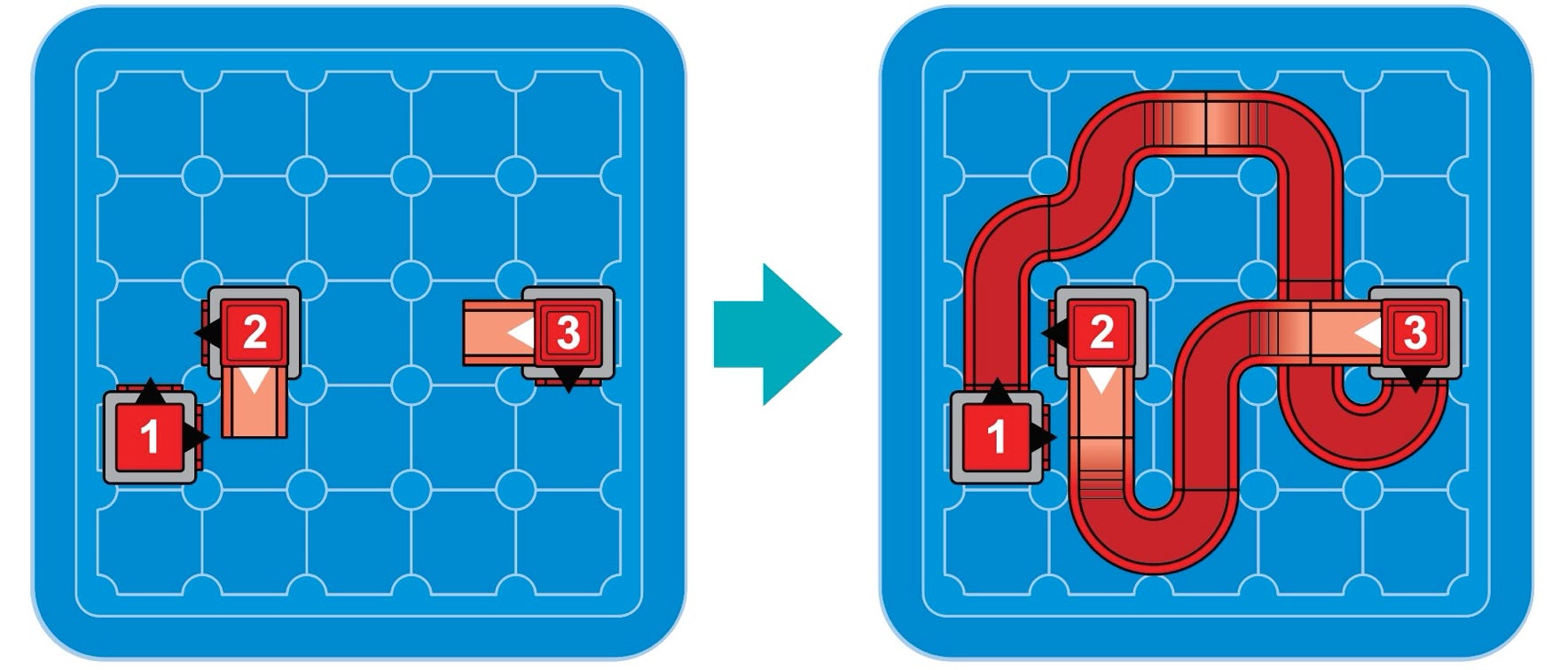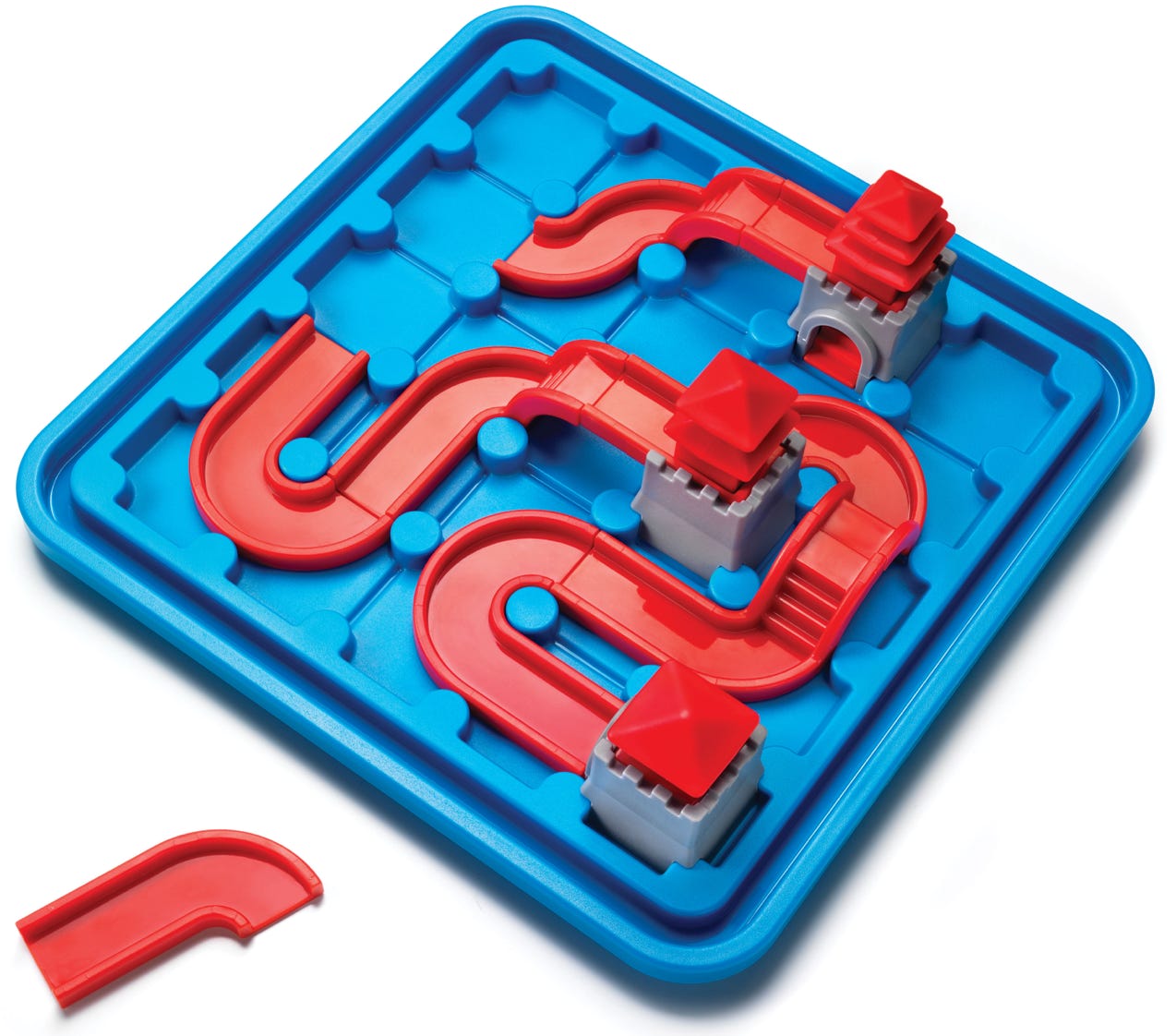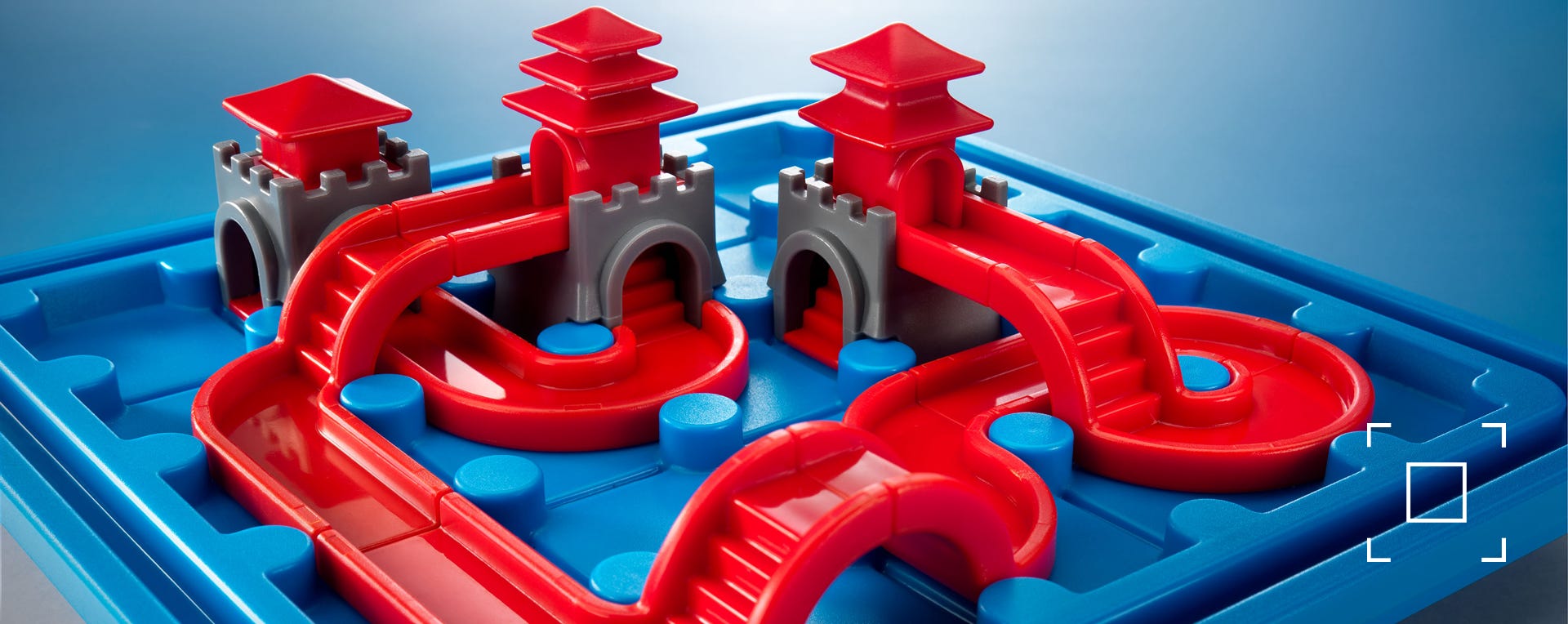
Temple Connection
The story behind the creation of Temple Connection
Raf Peeters, January 2017
In 2016 we still had a lot of work updating the packaging of all SmartGames to the new linelook. And after working for 20 years for Smart I really needed a long holiday. So I took a 3 months break and only had time to design a limited number of new puzzle games. Therefor I wanted to use puzzle mechanics that I really like solving myself. Temple Connection combines a few of my favorite things: mazes, bridges, stairways and towers.
BRIDGE THE GAP
The nice thing about a bridge is that you use paths on two levels. The bridge can connect two paths on a higher level, but at the same time, another path can run underneath. This way you can make a labyrinth with different paths that can cross each other. Originally I started with castles on hill tops, that you needed to connect. The downside of that was that the theme was too close to that of Walls & Warriors. And even more problematic was that the castles needed to be very small. The game also looked very dull. Most castles have grey colors and medieval roads and bridges are mostly brown or grey too, which didn’t result in an appealing looking game. So I started searching for alternative themes that included towers and paths.
THE PATH TO WISDOM
At one point I was looking to images of China and Japan. Maybe I got inspired by the “Great Wall”, maybe not. I don’t exactly remember. But I did found an image of Chinese bridges that I liked a lot. It included towers and the wooden bridge was painted in red. This immediately showed more promise: the theme was different, the colors made it look completely different to Walls & Warriors and there is something very visually pleasing about ancient asian towers: temples and towers have rooftops that are stacked on top of each other.
To create challenges I could start with the program my colleague wrote for Little Red Riding Hood Deluxe. On an abstract level these are very similar concepts, except that Temple Connection is more complex: it uses more road pieces to choose from and connections can be made on two different levels. This game also doesn’t include any “blockers” like the threes in Little Red Riding Hood. When you start a challenge, the only setup you need to make, is to position two or three towers on the right place on the game board. For players it’s a bonus if a puzzle game doesn’t require a lot of setup. You can immediately start playing and there is a smaller risk of making mistakes. To further differentiate the looks of this game with the fairy tale version, the puzzle pieces are limited to the shape of the paths which are positioned in between cylindrical shapes on the game board.
As usual, finding the right combination of puzzle pieces was the most time consuming part of the development process. You have to generate challenges for many different versions. It’s not just a question of selecting the version with the most possible challenges. You have to find a version with the most interesting ones and with the most variation between the challenges. If you add too many puzzle pieces, the game becomes complex and only few challenges will have an unique solution. But if you don’t have enough puzzle pieces in your set, all challenges start to look very similar. So it’s a question of finding the right balance.
The object of the game is to connect all temples with a path. Some challenges will have only 2 temples, other challenges 3. If you have to connect 3 temples you will use 2 paths. Two temples will be at the ends of the path, one will be in the middle, but you don’t know which one. Each temple at the end of a path will have a door which is not used in the solution. So not every door needs to have a connection. To visualize that you can enter one door to continue your path through the second door on a different level, there is a stairway visible inside two towers. The third tower only has two doors on the ground level. To easily identify the 3 temple towers in the challenge, each tower has a different number of rooftops (indicated in the challenge). So the number on top of the rooftops in the challenge does NOT refer to the order in which the temples need to be connected! It only refers to the number of rooftops of that temple. This way the roofs are not only visually pleasing, but also have “ a function”. A black triangle in the challenge indicates a door on the ground level. A white triangle indicates where there is a door on the second floor. Doors on the second floor of temples also have a path with an overhang, so that it can connect to a bridge part.
THE NAME OF THE GAME
As always, inventing a game, designing it, creating and testing challenges, is easy compared to the process of finding the right product name. If you ask 10 people you got 10 different answers. The name is often a compromise and Temple Connection is no exception to that rule. The good thing about this name is that it explains immediately the object of the game. But it’s maybe not the most inspiring name and it might be a little confusing, because SmartGames already has a completely different puzzle game named Temple Trap which I designed in 2011.
UPDATE 2019: DRAGON EDITION
In 2019 a new version will replace the original version of Temple Connection. Although we only introduced this game 2 years ago, I always felt like the game missed something. Everything looked so blue and red. That’s why the new version will include an extra element: a golden dragon. In all challenges (except the wizard level) this dragon will indicate 3 squares of the grid where you can’t place any path puzzle pieces. The only exception is the low middle part of the dragon: you can make a bridge over the back of the dragon. The rest of the challenges remained the same. So apart from the golden dragon, this is still the same game, but slightly easier, because of the extra hint.

example of an easy challenge/solution of Temple Connection with 2 temples and 2 puzzle pieces

example of a difficult challenge/solution of Temple Connection that uses 3 temples and 6 puzzle pieces


GAME RULES TEMPLE CONNECTION (DRAGON EDITION)
1) Select a challenge. Place the temples (and Dragon, if included) on the game board as indicated in the challenge:
• There are 3 temples, each with different rooftops. A number (1, 2 or 3) indicates how many rooftops a specific temple has.
• Temples must be oriented correctly, with the doors facing the directions indicated in the challenge.
• The position of a door on the ground floor is indicated by a black triangle. If there is a door on the second floor, this is indicated by a white triangle.
• Easier challenges include two towers only.
• All challenges (except the Wizard level) now include an extra hint: the golden Dragon.
2) The object of the game is to place puzzle pieces with roads and bridges on the board to create paths that connect the temples.
• Roads can have 2 levels, high end and low end. You can connect a high end with another high end to create a bridge, or you can connect a high end to a door on the second floor of a temple.
• A low end can connect to another low end, or to a door on the ground floor of a temple.
• When you create a bridge, a road can pass underneath if needed.
• In challenges with 3 temples there will be two paths.
• Because every temple has 2 doors, some doors will not be used.
• You don’t need to use all puzzle pieces. Easy challenges often need fewer road pieces than harder challenges.
• The places on the game board occupied by the tail or head of the Dragon cannot be used for paths. However, bridges can be build over the middle part of the Dragon.
3) There is only 1 correct solution, found at the end of the challenge booklet.
Website ©2017 Raf Peeters
Products and images: © Smart
